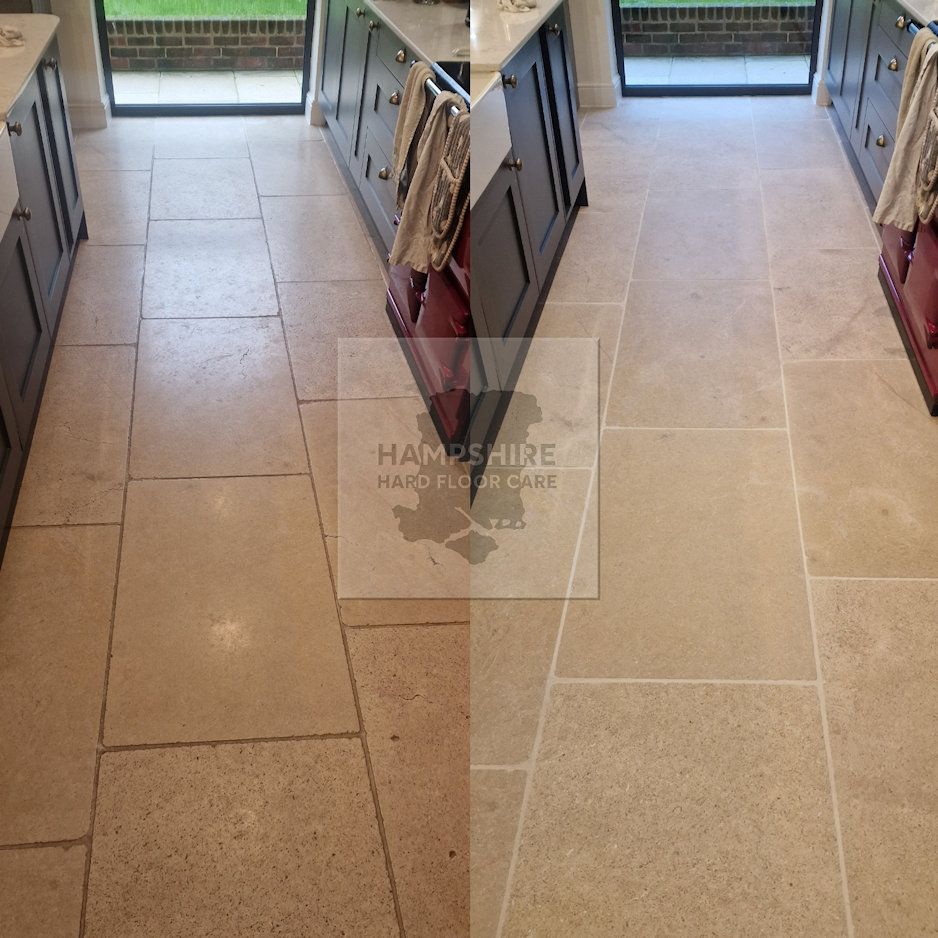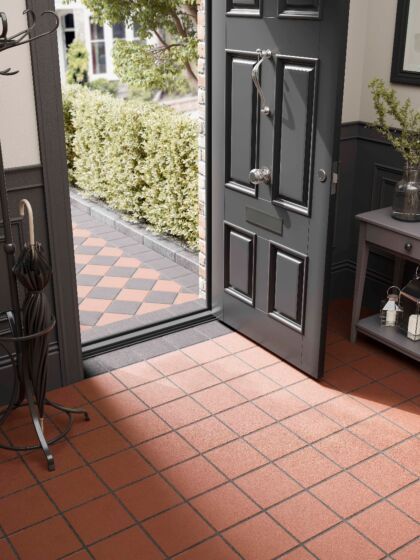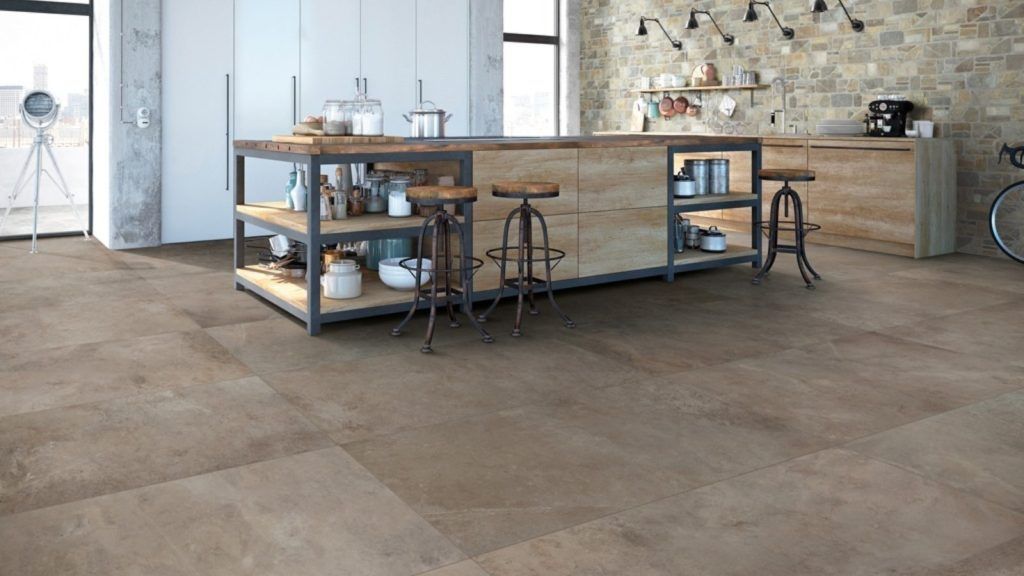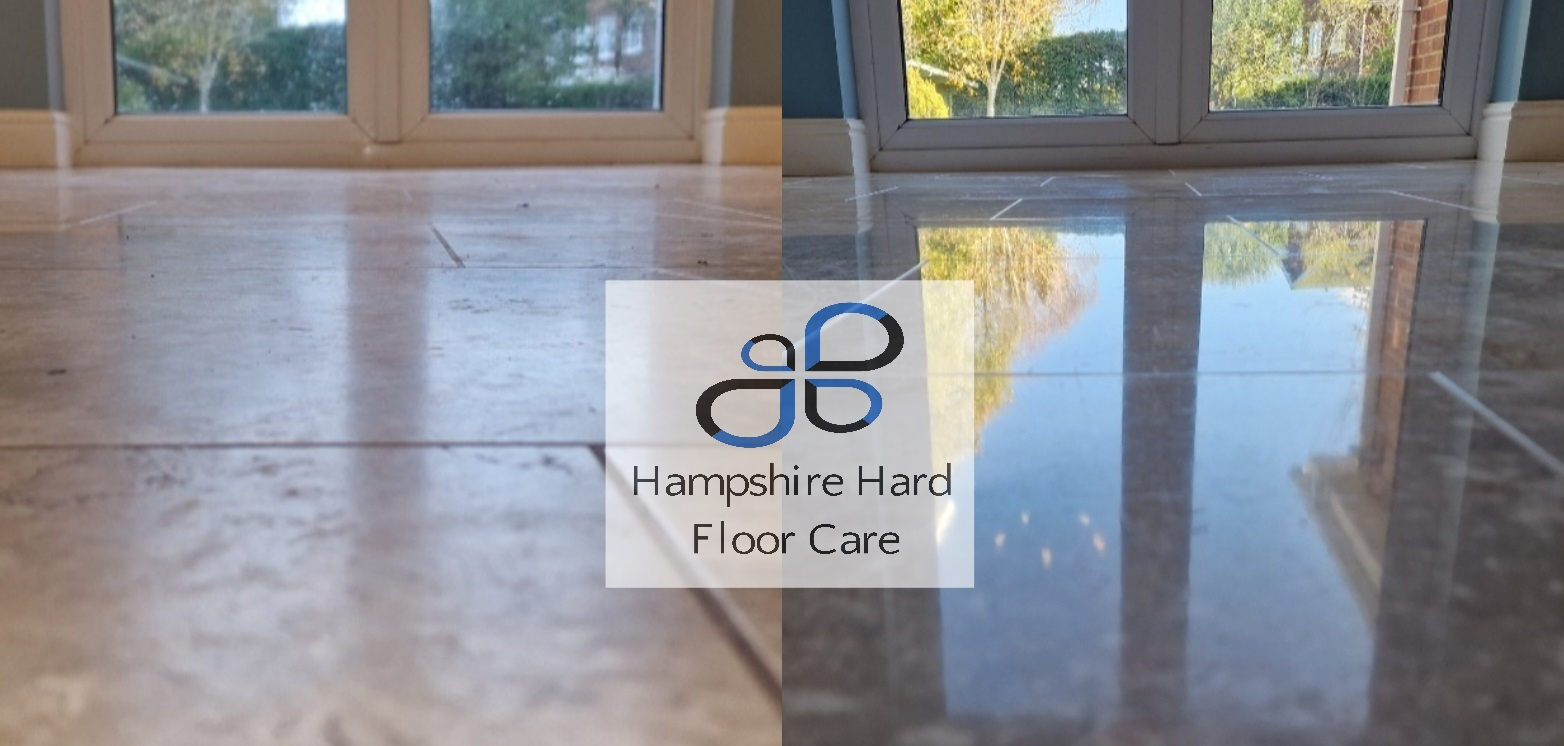Everything You Need to Know About Terracotta Floors – Care, Cleaning & Maintenance Guide
June 15, 2025
The Timeless Appeal of Terracotta Flooring: How It's Made and Why It's a Sustainable Choice

Terracotta flooring has long been a beloved choice for those who appreciate the warm, earthy aesthetics it brings to interiors. Tracing its roots back to ancient civilizations, this natural flooring solution is crafted through a process that combines artistry with durability, making it a timeless option for both traditional and modern homes. As more homeowners and designers seek sustainable flooring options, terracotta stands out not only for its environmental benefits but also for its unique ability to enhance any space with its rustic charm. In this post, we'll delve into
how terracotta is made
, explore essential tips for maintaining terracotta flooring, and discuss the importance of sealing and finishing to ensure longevity and beauty. Whether you're an interior designer, architect, or DIY enthusiast, uncover the secrets to incorporating this elegant and eco-friendly material into your next home improvement project.
The Craft of Terracotta Flooring
Terracotta flooring is a testament to the enduring beauty of traditional craftsmanship. This section explores the intricate process of creating terracotta tiles, the artistry involved in their finishes, and essential sealing techniques that preserve their charm.How Terracotta is Made
Terracotta, meaning "baked earth" in Italian, is crafted through a time-honoured process that begins with carefully selected clay. This natural material is extracted from quarries and undergoes several stages of refinement. The clay is first mixed with water to achieve the right consistency. It's then shaped into tiles using moulds or extrusion techniques. Each tile is left to air dry, a crucial step that can take several days depending on environmental conditions. Once dry, the tiles enter kilns where they're fired at high temperatures, typically between 900°C and 1000°C. This firing process gives terracotta its characteristic warm, reddish-brown hue and robust durability. The result is a unique, natural flooring solution that carries the essence of the earth itself.The Art of Terracotta Finishes
Terracotta finishes are where craftsmanship meets artistry. The natural beauty of terracotta can be enhanced through various finishing techniques, each imparting a unique character to the tiles. One popular finish is the rustic look, which embraces the natural imperfections and variations in the clay. This finish often involves minimal intervention, allowing the raw beauty of the terracotta to shine through. For a more refined appearance, tiles can be ground and polished to create a smooth surface. This process brings out the subtle colour variations within the clay, resulting in a more uniform yet still organic look. Some artisans apply glazes or engobes to terracotta tiles, introducing a range of colours and patterns. These decorative techniques can transform the tiles into works of art, suitable for creating stunning feature floors or wall accents.Maintaining Terracotta Flooring
Proper maintenance is key to preserving the beauty and longevity of terracotta flooring. This section covers essential care routines and long-term maintenance strategies to keep your terracotta floors in prime condition.Flooring Maintenance Basics
Regular maintenance of terracotta flooring involves a combination of routine cleaning and protective measures. Daily sweeping or vacuuming prevents abrasive dirt from scratching the surface. For deeper cleaning, use a pH-neutral cleaner specifically formulated for terracotta. Avoid harsh chemicals or acidic cleaners that can damage the sealant or the terracotta itself. Damp mopping with warm water and mild soap is often sufficient for regular cleaning. Address spills promptly to prevent staining, especially on unsealed or poorly sealed terracotta. Blot spills rather than wiping to avoid spreading the liquid further into the porous surface.Long-term Care and Home Improvement
Long-term care of terracotta flooring involves periodic deep cleaning and resealing. Every few years, consider stripping old wax or sealant and applying a fresh coat to maintain protection. In high-traffic areas, you may need to address wear patterns. This can involve professional restoration techniques such as grinding and polishing to restore an even surface. For DIY enthusiasts , minor repairs like filling small cracks or chips can be manageable home improvement projects. However, for significant damage or large-scale restoration, it's advisable to consult professionals experienced in terracotta restoration.Cleaning Terracotta Flooring in Hampshire
Cleaning terracotta flooring is essential for maintaining its unique charm and ensuring its longevity. Here are some effective cleaning techniques to keep your terracotta floors looking their best:Routine Cleaning Practices
To preserve the vibrancy and condition of your terracotta flooring, adhere to these routine cleaning practices:- Sweeping or Vacuuming : Regularly sweep or vacuum to remove dust, dirt, and debris. This prevents particles from scratching the surface.
- Damp Mopping : Use a damp mop with warm water to clean the floors, ensuring that the mop is not overly saturated to avoid water absorption by the tiles.
- pH-Neutral Cleaners : Choose pH-neutral cleaners specifically designed for terracotta to prevent damage to the sealant or tiles.
Addressing Stains and Spills
Timely intervention is crucial when dealing with spills or stains:- Immediate Blotting : Quickly blot any spills with a soft cloth to prevent liquids from seeping into the tiles’ porous surface.
- Stain Removal : For stubborn stains, a mixture of baking soda and water can act as a natural cleaning paste. Apply gently to the stain and rinse thoroughly with water.
Deep Cleaning
For a more thorough cleaning, follow these steps periodically:- Prepare a Cleaning Solution : Mix a small amount of pH-neutral cleaner with water, following the manufacturer’s instructions.
- Scrub Gently : Use a soft-bristle brush to gently scrub the tiled area, focusing on grout lines and stained sections.
- Rinse : Thoroughly rinse the area with clean water to remove any cleaning solution residue.
- Dry : Use a clean, dry cloth to absorb any remaining moisture, ensuring the tiles are completely dry to avoid water marks or damage.
Terracotta Sealing Tips
Proper sealing is crucial for maintaining the beauty and integrity of terracotta flooring. This process protects the porous surface from stains, moisture, and wear. Before sealing, ensure the terracotta is thoroughly clean and dry. Choose a high-quality sealer specifically designed for terracotta. Here's a basic sealing process:- Apply a penetrating sealer to protect the tile from within.
- Allow the sealer to dry completely, following manufacturer instructions.
- Apply a surface sealer or wax for additional protection and sheen.
The Sustainability of Terracotta
In an era of increasing environmental awareness, terracotta flooring stands out as a sustainable choice. This section delves into the eco-friendly aspects of terracotta and its role in natural flooring solutions.Natural Flooring Solutions
Terracotta exemplifies the beauty and practicality of natural flooring solutions. As a product derived directly from the earth, it offers numerous environmental benefits. The primary component of terracotta - clay - is abundant and renewable. Its extraction has a relatively low environmental impact compared to synthetic flooring materials. The manufacturing process, while energy-intensive during firing, uses fewer chemical additives than many modern flooring alternatives. Terracotta's longevity is another key factor in its sustainability. Well-maintained terracotta floors can last for decades, reducing the need for frequent replacements and the associated environmental costs.Terracotta as a Sustainable Choice
Choosing terracotta flooring aligns with sustainable building practices in several ways. Its thermal mass properties contribute to energy efficiency, helping to regulate indoor temperatures naturally. At the end of its lifecycle, terracotta can be recycled or safely returned to the earth, unlike many synthetic flooring materials that may persist in landfills for centuries. This biodegradability is a significant advantage in reducing long-term environmental impact. Terracotta's sustainability extends beyond flooring. Its use in facades and other architectural elements showcases its versatility in green building design, contributing to both aesthetics and environmental performance.Designing with Terracotta
Terracotta's versatility makes it a favourite among designers and homeowners alike. This section explores how to incorporate terracotta into various interior design styles and innovative ways to use it in home improvement projects.Terracotta in Interior Design
Terracotta flooring adds warmth and character to a wide range of interior design styles. In traditional settings, it complements rustic and Mediterranean aesthetics perfectly. For modern interiors, terracotta can provide an earthy contrast to sleek, contemporary furnishings. Its natural variations in colour and texture add depth and interest to minimalist spaces. Terracotta's neutral tones make it an excellent base for bold colour schemes or a subtle backdrop for more muted palettes. Designers often pair it with natural materials like wood and stone to create cohesive, organic interiors.Creative Uses in Home Improvement
Beyond flooring, terracotta offers creative possibilities for home improvement projects. Consider using terracotta tiles for:- Kitchen backsplashes
- Bathroom accent walls
- Outdoor patios or walkways
- Fireplace surrounds
Advantages of Terracotta Flooring
Terracotta flooring offers a multitude of benefits that have contributed to its enduring popularity. This section highlights the key advantages for homeowners and explores why terracotta remains a top choice for flooring.Benefits for Homeowners
Terracotta flooring provides numerous advantages for homeowners:- Durability : Properly maintained terracotta floors can last for generations.
- Temperature regulation : Terracotta's thermal mass helps maintain comfortable indoor temperatures.
- Unique aesthetics : Each tile has a distinct character, creating floors with personality.
- Eco-friendly : As a natural material, terracotta is a sustainable flooring option.
- Versatility : Suitable for various rooms and design styles.
Why Choose Terracotta Flooring
Terracotta flooring stands out as a choice that combines aesthetics, functionality, and sustainability. Its timeless appeal means it won't go out of style, making it a wise long-term investment for your home. The natural variations in terracotta tiles create floors that are truly unique, adding character and warmth to any space. This individuality is highly valued in an era of mass-produced materials. For those concerned about indoor air quality, terracotta is an excellent choice. It's free from volatile organic compounds (VOCs) and other harmful chemicals often found in synthetic flooring options. Ultimately, choosing terracotta flooring means investing in a product with a rich history, proven durability, and a beauty that only improves with age.Recent Posts

July 13, 2025
Maintaining the pristine appearance of a travertine floor can elevate the overall look of your home, but dealing with unsightly holes can feel daunting. Many homeowners in Hampshire face this common challenge and are eager to find effective solutions for Travertine hole filled Hampshire. Understanding the intricacies of Travertine Floor Cleaning Hampshire is essential Understanding Travertine Floors Travertine floors are a popular choice for homeowners seeking elegance and durability. Before we dive into repair techniques, let's explore what travertine is, common issues you might encounter, and why regular maintenance is crucial. What is Travertine? Travertine is a natural stone formed by mineral deposits from hot springs. It's known for its unique, pitted surface and warm, earthy tones.This limestone-based material has been used in construction for centuries, dating back to ancient Roman architecture. Today, it's a popular choice for flooring, especially in bathrooms and outdoor spaces. Travertine comes in various finishes, from polished to tumbled, each offering a distinct look and feel. Its natural variations in colour and pattern make each travertine floor unique. Common Issues with Travertine Travertine, while beautiful, is not without its challenges. Understanding these issues can help you maintain your floor effectively.One of the most common problems is the formation of holes or pits. These can occur naturally or develop over time due to wear and tear. Scratches and etching are also frequent issues, especially in high-traffic areas.Staining is another concern, as travertine is porous and can absorb liquids if not properly sealed. Acidic substances, in particular, can cause etching and discoloration.Lastly, improper cleaning methods can damage the surface, leading to a dull appearance or even more severe issues over time. Benefits of Regular Maintenance Regular maintenance of your travertine floor is not just about aesthetics; it's about preserving your investment and extending the life of your flooring.Consistent care helps prevent the build-up of dirt and grime, which can lead to scratching and dulling of the surface. It also allows you to catch and address minor issues before they become major problems.Proper sealing, a key part of maintenance, protects against stains and makes cleaning easier. Regular upkeep also helps maintain the natural beauty of the stone, ensuring your floor continues to enhance your home's appeal for years to come. Preparing for Repair Before you start filling holes in your travertine floor, proper preparation is key. This section will guide you through gathering the necessary tools, cleaning the area, and taking important precautions. Gathering Necessary Tools To repair holes in your travertine floor effectively, you'll need to assemble the right tools and materials. This preparation ensures a smooth repair process. Start with a travertine repair kit , which typically includes epoxy filler and color-matching pigments. You'll also need a putty knife or small trowel for application.Don't forget safety gear like gloves and eye protection. A vacuum cleaner, soft cloths, and a mild stone cleaner will be necessary for preparing the area.Lastly, gather fine-grit sandpaper and a polishing pad to finish the repair seamlessly. Cleaning the Area A clean surface is crucial for a successful repair. Follow these steps to prepare the area: Vacuum the floor thoroughly to remove loose debris. Wipe the area with a damp cloth using a pH-neutral stone cleaner. Allow the surface to dry completely before proceeding. Proper cleaning ensures better adhesion of the filler and a more seamless repair. It also helps you identify any additional damage that might need attention. Precautions to Take Safety and caution are paramount when repairing travertine floors. Here are some important precautions:Always work in a well-ventilated area, as some repair products may have strong odours. Wear gloves to protect your hands from chemicals and sharp edges.Test any cleaning or repair products on an inconspicuous area first to ensure they won't damage or discolour your travertine. Read and follow all manufacturer instructions carefully.If you're unsure about any step in the process, don't hesitate to consult a professional. Improper repairs can sometimes cause more harm than good. Filling Holes in Travertine Now that you're prepared, it's time to tackle those unsightly holes in your travertine floor. This section will guide you through selecting the right filler, the step-by-step filling process, and how to properly dry and finish your repair. Choosing the Right Filler Selecting the appropriate filler is crucial for a successful travertine repair. The right choice will ensure a durable and visually appealing result. Epoxy-based fillers are often recommended for travertine due to their strength and ability to match the stone's colour. Color-matching kits can help you achieve a near-perfect match to your specific travertine shade. Consider the size of the holes you're filling. Larger holes may require a different product than smaller pits. Always opt for fillers specifically designed for natural stone to ensure compatibility with travertine. Step-by-Step Filling Process Follow these steps to fill holes in your travertine floor: Clean the hole thoroughly, removing any loose debris. Mix the filler according to the manufacturer's instructions. Apply the filler using a putty knife, slightly overfilling the hole. Smooth the surface, ensuring it's level with the surrounding area. Remove any excess filler immediately with a damp cloth. Work carefully but quickly, as some fillers set rapidly. For larger holes, you may need to apply the filler in layers, allowing each to dry before adding the next. Drying and Finishing Proper drying and finishing are essential for a seamless repair. Here's how to complete the process:Allow the filler to dry completely according to the product instructions. This can take anywhere from a few hours to overnight.Once dry, sand the filled area gently with fine-grit sandpaper to achieve a smooth, even surface. Be careful not to sand the surrounding travertine. Finally, polish the repaired area to match the sheen of your floor. You may need to apply a sealer to protect the repair and ensure it blends seamlessly with the rest of the floor. Aftercare Tips After successfully filling holes in your travertine floor, proper aftercare is essential to maintain its beauty and prevent future damage. This section covers routine cleaning, damage prevention, and when to seek professional help. Routine Travertine Floor Cleaning Hampshire Regular cleaning is key to maintaining the beauty of your travertine floor. Here are some tips for effective cleaning :Use a soft-bristled broom or vacuum with a soft attachment to remove loose dirt daily. For deeper cleaning, use a pH-neutral cleaner specifically designed for natural stone.Avoid acidic or abrasive cleaners, which can damage the travertine. Always clean spills immediately to prevent staining or etching.Consider professional cleaning services periodically to maintain your floor's pristine condition and extend its lifespan. Preventing Future Damage Prevention is always better than cure when it comes to travertine floors. Here are some preventive measures:Place mats at entrances to trap dirt and grit that can scratch the surface. Use felt pads under furniture legs to prevent scratches when moving items.Seal your travertine floor regularly to protect against stains and moisture. The frequency depends on the type of sealer used and the amount of traffic your floor receives.Be cautious with sharp objects and avoid dropping heavy items that could chip or crack the travertine. When to Seek Professional Help While many travertine repairs can be DIY projects, some situations call for professional expertise:If you notice widespread damage, deep cracks, or structural issues, it's time to call in the experts. Professional help is also advisable for large-scale repairs or if you're unsure about matching colours correctly.Consider professional assistance if you're dealing with stubborn stains or if your floor needs re-polishing. Experts have access to specialised tools and products that can restore your travertine to its original glory.









